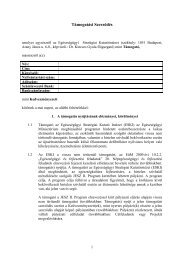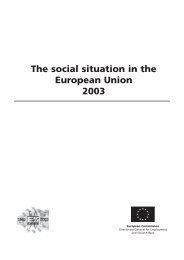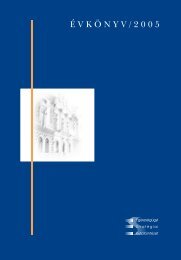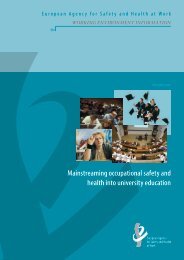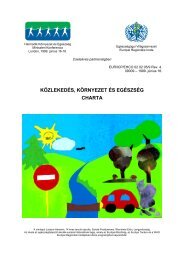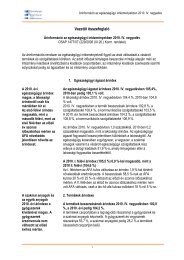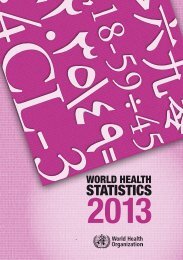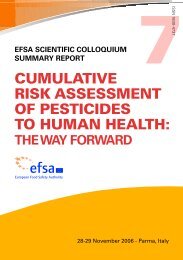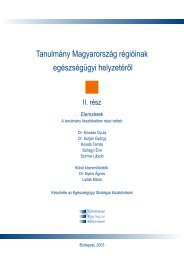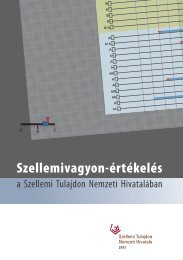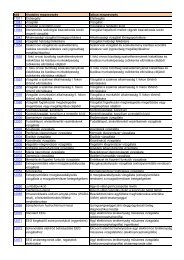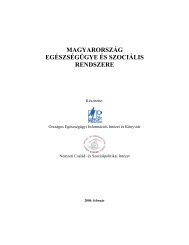WHO Technical Report Series, No. 981 - World Health Organization
WHO Technical Report Series, No. 981 - World Health Organization
WHO Technical Report Series, No. 981 - World Health Organization
You also want an ePaper? Increase the reach of your titles
YUMPU automatically turns print PDFs into web optimized ePapers that Google loves.
<strong>WHO</strong> Expert Committee on Specifications for Pharmaceutical Preparations Forty-seventh report<br />
Risk assessment can be aided by the use of a decision-tree, which<br />
facilitates a logical approach. The way that a decision-tree is used will depend<br />
on the operation concerned, e.g. production, packaging, reprocessing, storage or<br />
distribution. The best use of QRM tools is discussed further in section 5.<br />
<strong>No</strong>rmally, potential risks in relation to the following should be considered:<br />
■■<br />
■■<br />
■■<br />
■■<br />
■■<br />
■■<br />
■■<br />
■■<br />
■■<br />
■■<br />
■■<br />
materials and ingredients;<br />
physical characteristics and composition of the product;<br />
processing procedures;<br />
microbial limits, where applicable;<br />
premises;<br />
equipment;<br />
packaging;<br />
sanitation and hygiene;<br />
personnel (human error);<br />
utilities;<br />
supply chain.<br />
<strong>WHO</strong> <strong>Technical</strong> <strong>Report</strong> <strong>Series</strong> <strong>No</strong>. <strong>981</strong>, 2013<br />
The output of a risk assessment is either a quantitative estimate of risk<br />
(numeric probability) or a qualitative description of a range of risk (e.g. high/<br />
medium/low) and may be related to a risk matrix (see section 5). The scoring<br />
system and trigger points for mitigating action are subjective so the rationale for<br />
score categorization should be defined in as much detail as possible. If the score<br />
and trigger action are supported by factual evidence it should be more obvious<br />
what mitigating action is required – the mitigating action is as important as the<br />
score assigned. Professional judgement should be used in interpreting the factual<br />
evidence but must be subject to justification.<br />
Records of risk assessments should be maintained.<br />
The expectation of QRM is to assess risks to the product quality and to<br />
the patient and then manage these risks so that they are kept at an acceptable<br />
level. It is appropriate for companies to assess their control systems so as to<br />
implement the appropriate controls to ensure product quality and patient safety.<br />
An important principle in QRM is to design risks out of the process or eliminate<br />
such risks prospectively, whenever practical and feasible. Risk assessment and<br />
mitigation to achieve cost savings, but which could be to the detriment of the<br />
well-being of the patient, is an unacceptable practice (9).<br />
3.5 Risk control<br />
Risk control is a decision-making activity designed to reduce and/or accept risks.<br />
It usually occurs after risk assessment, and at a fundamental level its purpose is to<br />
reduce the risk to an acceptable level.<br />
72



